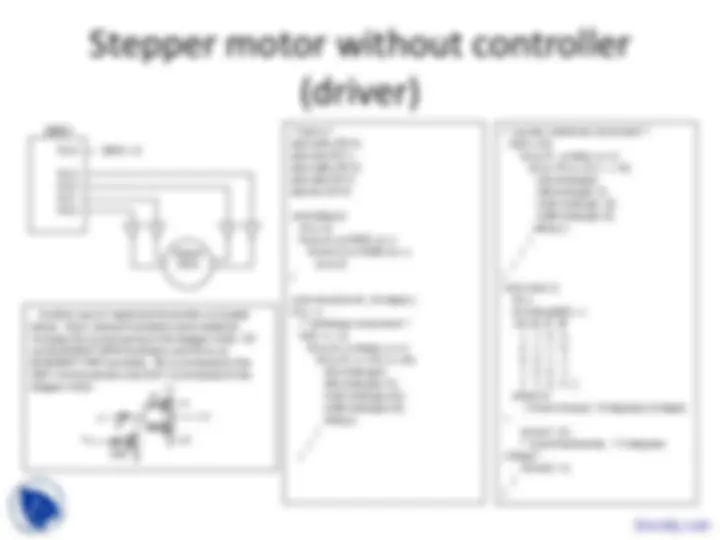



Study with the several resources on Docsity

Earn points by helping other students or get them with a premium plan


Prepare for your exams
Study with the several resources on Docsity

Earn points to download
Earn points by helping other students or get them with a premium plan
Community
Ask the community for help and clear up your study doubts
Discover the best universities in your country according to Docsity users
Free resources
Download our free guides on studying techniques, anxiety management strategies, and thesis advice from Docsity tutors
These are the Lecture Slides of Embedded System Design which includes Hardware Design, Elevator Controller, Simple Elevator Controller, Try Capturing, Unit Control, Request Resolver, Sequential Program Model, Partial English Description, System Interface etc. Key important points are: Stepper Motor Controller, Rotates Fixed Number, Power Applied, Voltage Sequence, Controller Greatly Simplifies, Driver, Connected, Several Transistors, Buffers, Microcontroller
Typology: Slides
1 / 3

This page cannot be seen from the preview
Don't miss anything!


1
5
4
3
2
7 8
6
16 15 14 13 12 11 10 9
Vd A’ A
GND
Bias’/Set Clk O|C
Vm B B’
GND
Phase A’ CW’/CCW Full’/Half Step
Sequence A B A’ B’ 1 + + - - 2 - + + - 3 - - + +
4 + - - + 5 + + - -
Stepper motor with controller (driver)
The output pins on the stepper motor driver do not provide enough current to drive the stepper motor. To amplify the current, a buffer is needed. One possible implementation of the buffers is pictured to the right. Q1 is an MJE3055T NPN transistor and Q2 is an MJE2955T PNP transistor. IN is connected to the 8051 microcontroller and OUT is connected to the stepper motor.
Q 1K
1K Q
+V
IN OUT